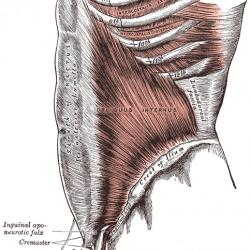Managing Chronic Wound: How Physical Therapy Helps with Management
Wound care is one of the most multidisciplinary and complex fields. It encompasses different healthcare experts who collaboratively work to promote the healing of wounds.
Traditional wound care concentrates on surgical interventions, dressings, and medications. However, physical therapy plays an important role in healing and treating chronic wounds quickly.
Understanding Chronic Wounds
Chronic wounds result from different causes. Physical therapists may help with any kind of chronic wound. It is crucial to remember that every time you have a skin break-in, there are risks for an infection. Because of that, you will need to seek treatment for your chronic wound sooner. Here are three major categories of wounds:
- Pressure injuries: These types of wounds happen in individuals who are bedridden or unable to change or move position well on their own. They happen under applied items that healthcare providers use in hospitals, like positioning devices, tubing or medical equipment, such as splints.
- Diabetic wounds: People with diabetes develop sensation and structural changes in the feet. Usually, these changes make people with diabetes more likely to get wounds. This type of wound often results from stepping on objects without us knowing it or wearing shoes that don’t fit us well.
- Venous wounds: With a chronic venous illness, circulation issues may make it difficult to pump fluid away from our legs, leading to swelling. Normally, this swelling breaks in our skin or even makes it more difficult for scrapes or external cuts to heal.
The Benefits of Physical Therapy in Managing Our Chronic Wounds
Wound healing is often influenced by several factors. These factors include mobility, circulation, and tissue oxygenation. Interventions of physical therapy target these factors. It aims to optimise conditions that are conducive to the process of healing wounds. Here is how physical therapy helps to manage our chronic wounds:
1. Addressing Functional Limitations
Physical therapists (PTs) often collaborate with their patients to identify all the functional limitations. They also develop personalised interventions to improve independence, strength, and mobility. This, in turn, facilitates a smooth transition to pre-surgery levels.
2. Relieving Symptoms and Manage Pain
A PT uses different modalities. These modalities include electrical stimulation and therapeutic ultrasound. Through these modalities, therapists won’t just help us to improve tissue tolerance. They will also help us to minimise inflammation and relieve pain.
3. Improving Tissue Oxygenation
Therapy helps to improve oxygen delivery to all the affected tissues. A good example of such a situation is where wounds occur in a place with compromised blood flow.
4. Preventing Secondary Complications and Improveing Mobility
PTs often use different techniques, including gait training. These techniques help to improve mobility and avoid immobility-related secondary complications.
In conclusion, managing our chronic wounds is not easy. We must seek physical therapy to help us manage pain and relieve symptoms. Therefore, if we have any wounds, we should visit a physical therapist for help. This way, we will not achieve functional goals. We will also heal your wounds quickly.
More to Read:
Previous Posts:







